Yoga for digestion: How it works
Our experts explain how yoga for digestion may improve symptoms of IBS
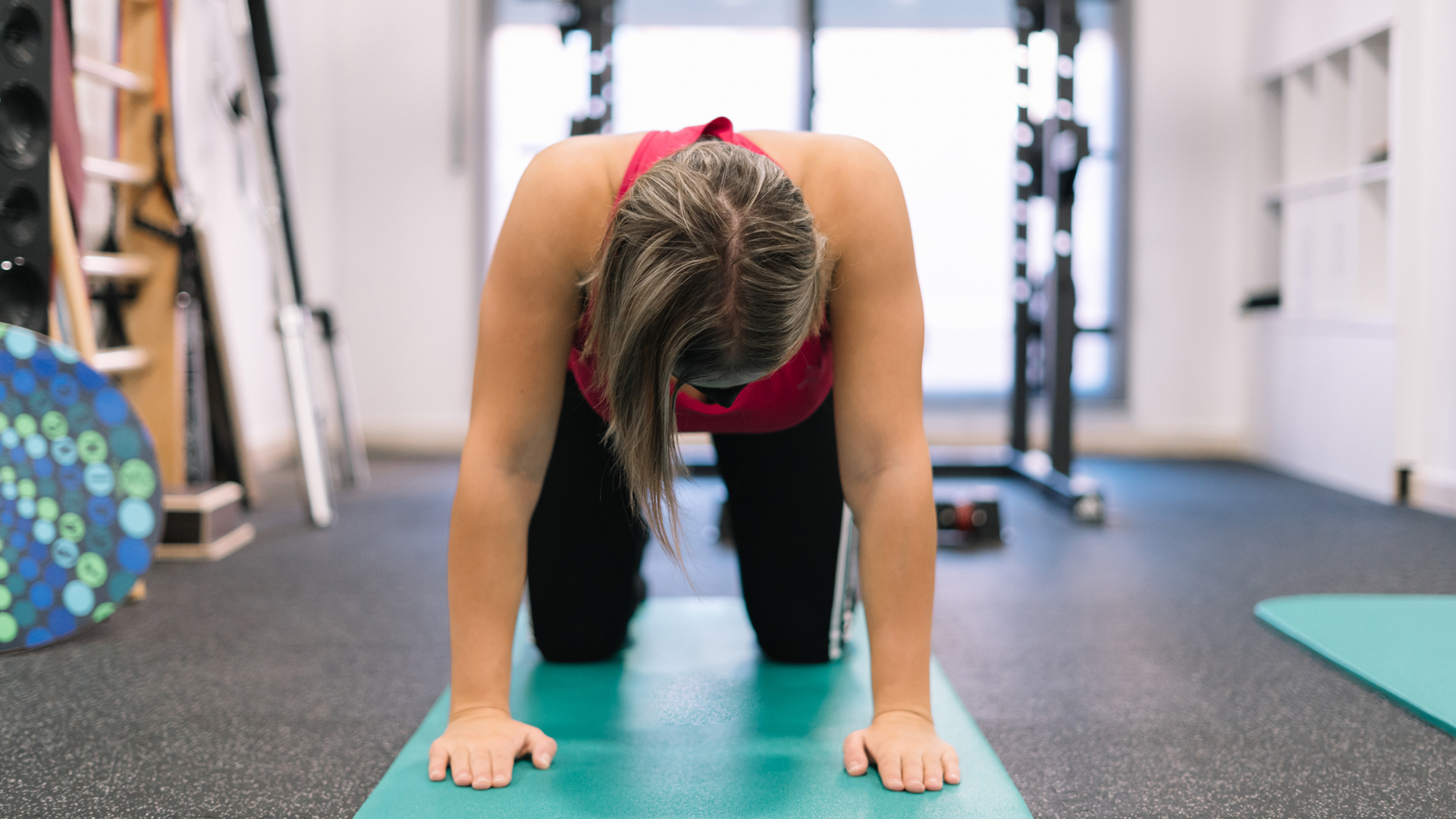
Overindulged at dinner? Yoga for digestion could help alleviate some of your discomfort and even improve symptoms of IBS.
A narrative review from Digestive Diseases and Sciences concluded that yoga is beneficial for IBS patients. And a 2018 review published in Frontiers in Psychiatry suggested that yoga could have a wider impact on stress responses and influence bowel function.
Gabriella Espinosa, yoga teacher at Movement for Modern Life, explains how it works: “Our gut is known as our ‘second brain’ because of a communication network of nerves that form the gut-brain axis.
“The vagus nerve is the longest cranial nerve in our body. It originates in the brain stem and connects to organs like our gastrointestinal organ, influencing our digestion. Research suggests that stimulating the vagus nerve using yoga could be an effective way to stimulate the gut-brain axis.”
Dodgy digestion can be deeply unpleasant and debilitating but finding ways to improve gut health, including investing in the best probiotic, can help. Below, our experts explain how the physical benefits of yoga for digestion may boost your gut health, as well as some simple poses to try.
What causes digestive issues?
According to the National Ambulatory Medical Care Survey, a staggering 60-70 million people suffer from some degree of digestive disorder. But while there are many contributing factors (like diet and disrupted sleep), Eve Kalinik, registered nutritional therapist, gut health specialist, and owner of Kalla Probiotics, believes stress plays a vital role.
“We know that stress hormones like cortisol can lead to increased inflammation in the gut,” says Kalinik. “This stress can damage and compromise the gut barrier and the balance of 'good' versus 'bad' bugs, so we start to experience more systemic inflammation in the body.”
She also adds that all too often we lean towards blaming food as the cause for bloating, but stress can have just as much of an impact. “I call it the mind bloat,” she says. “The release of stress hormones can impair the breakdown of food and alter motility in the gut, which affects how and when we poop. Managing our psychological stress is a key part of helping to manage bloat and digestion.”
Can yoga help with digestion?
A study published in Pain Research & Management found that adolescents with IBS who practiced yoga reported significantly less gastrointestinal symptoms than those who didn’t, and regular practice helped them manage their IBS symptoms. Another study published by the European Journal of Integrative Medicine also found a significant reduction in symptoms of IBS patients and suggested that a 12-week remedial yoga module could be an effective treatment or integrative option for IBS patients.
Kalinik also believes yoga can be an incredibly helpful tool for supporting gut health. “Yoga may help alleviate digestive symptoms like gas and bloating,” Kalinik tells us.
“Diaphragmatic belly breathing can have a marked impact on reducing stress levels by activating the parasympathetic nervous system, which is a key part of supporting gut health,” she says. Kalinik also explains that the meditative aspect of yoga lowers stress levels which positively affects the gut-brain connection, reduces cortisol, and supercharges overall gut health.
If you’re looking for ways to soothe your digestive suffering alongside optimal sleep hygiene and a balanced diet, give this seven-move restorative yoga sequence a try.
Easy yoga for digestion sequence
This yoga for digestion sequence uses a series of breathing techniques, twisting asanas, and calming restorative poses to aid digestion.
1. Diaphragmatic breathing: Breath awareness and mindfulness meditation
How to:
- Sit upright somewhere comfortable and place both hands on your abdomen
- Close your eyes and bring your attention to your breath
- Breathe in deeply and slowly through your nose, guiding your breath towards your lower belly and noticing your abdomen expand
- Exhale and notice the abdomen softly floating back towards your spine
- Continue for 5-10 minutes, supporting the natural movement of the diaphragm
How it works
Your diaphragm is the main muscle responsible for respiration. Using your diaphragm to breathe fully gently massages the intestinal organs and stomach, reducing pain and supporting digestion.
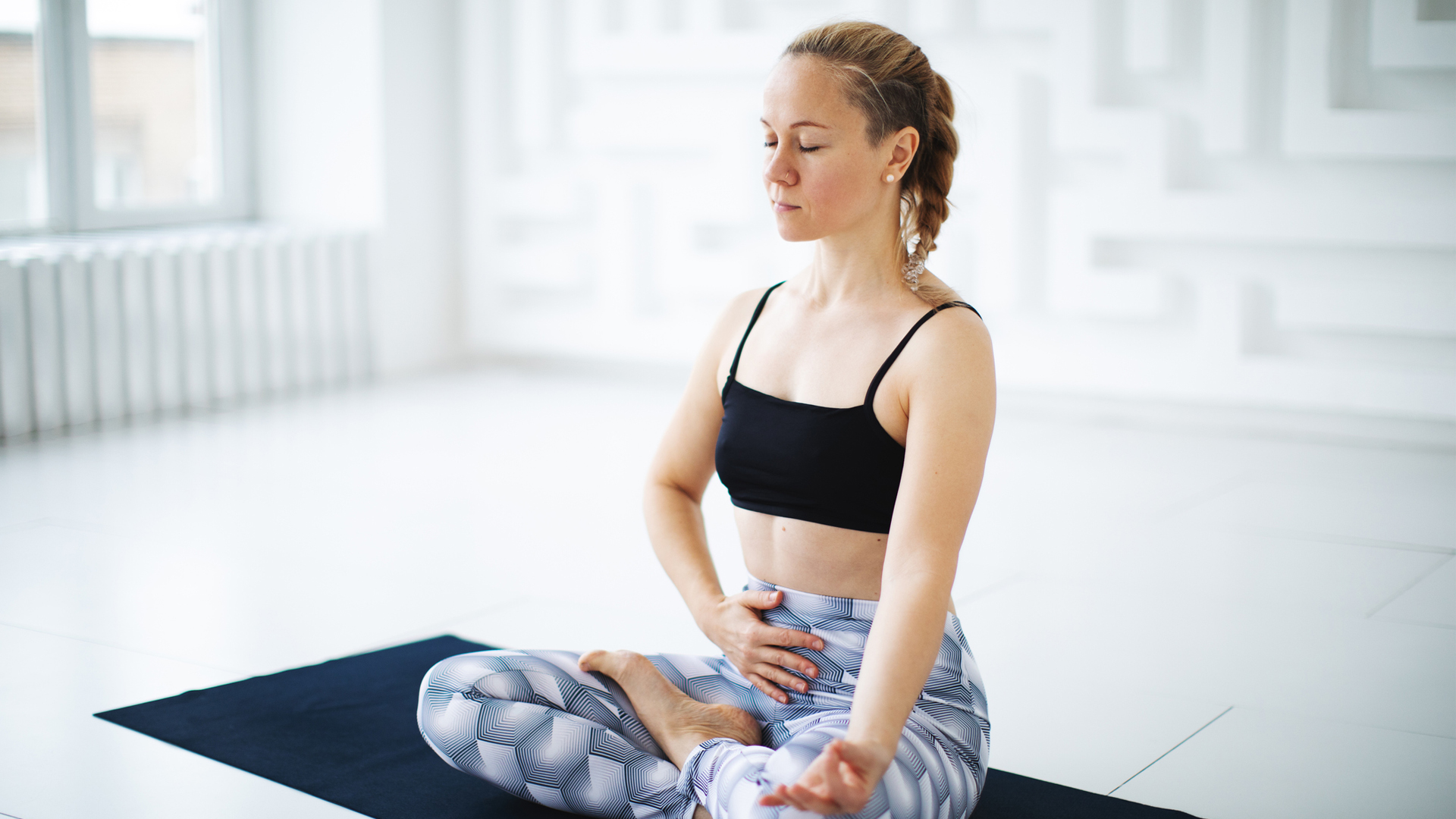
2. Cat-Cow: Switch on your rest and digest response
How to:
- Begin in tabletop (on all fours), with wrists stacked under your shoulders and knees underneath your hips, and maintain a neutral spine
- As you inhale, gently press your chest forward and allow your stomach to drop towards the floor as your tailbone lifts. Lift your head to open your throat (cow)
- As you exhale, press through the hands, round your spine, draw your tailbone under, and gently bring your chin towards your chest (cat)
- Move between each pose using your breath to guide you for 5-10 breaths. Keep your weight evenly distributed between your hands and knees.
How it works
Cat-Cow mobilizes areas that stimulate the Vagus Nerve, which then switches on the parasympathetic mode of our nervous system. Synchronizing breath and movement also relieves stress.

3. Crocodile Pose: To soothe and calm
How to:
- Fold a blanket, then lie face down and place your abdomen on the blanket with your ribs just over the top edge and hips below the bottom edge
- With your feet hip-width apart, turn your toes either in or out. Fold your arms and rest your forehead on them
- Bring your awareness to your breath, noticing your stomach being gently massaged as you inhale and exhale
- Slow and deepen your breath to further stimulate the vagus nerve and aid relaxation
(Do not perform during pregnancy or if you suffer from a condition that makes abdominal pressure uncomfortable.)
How it works
Crocodile pose stretches and relaxes the paraspinal muscles, strengthens the respiratory diaphragm, and stimulates the connective tissue of the stomach, which activates the Vagus Nerve and lowers heart rate.

4. Chair Twist: Supports digestion
How to:
- Sit upright in a chair, feet hip-width apart and placed firmly on the floor
- Press your left hand onto your right thigh and right hand behind your right hip, onto the chair seat
- Inhale and keep your spine long, then, as you exhale, gently begin to turn your torso leading with your stomach, and look behind your right shoulder
- Hold for 3-5 breaths, gently turn back to center, and repeat on the other side
How it works
Twists create movement around your spinal muscles and digestive organs, which stretches your back muscles and gently stimulates the gastrointestinal organs. Twisting also stimulates blood circulation and releases abdominal muscle tension. It also creates intra-abdominal compression, which delivers fresh blood flow and oxygen to digestive organs.
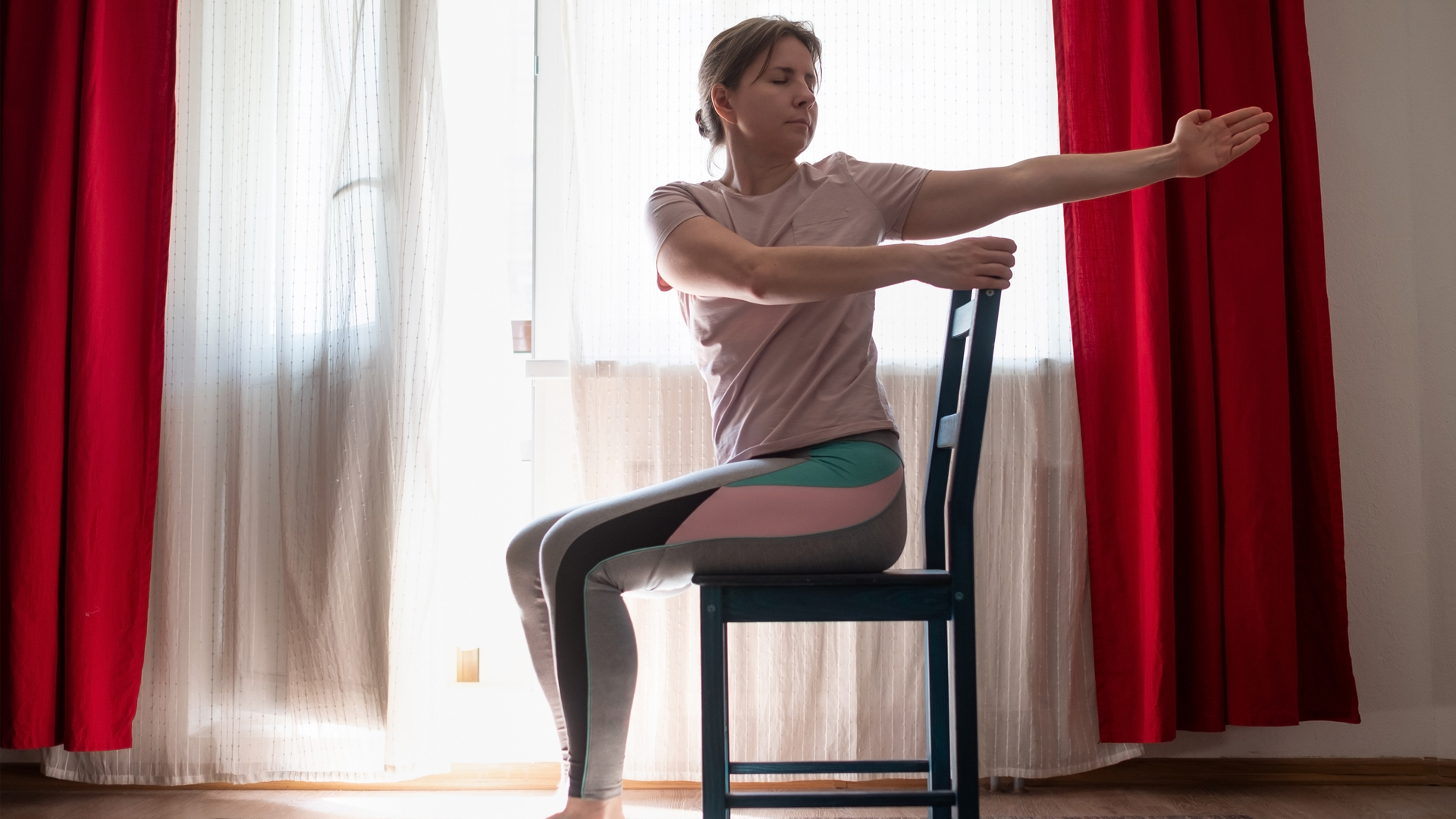
5. Garland Pose: Encourages optimal elimination
How to:
- Step your feet slightly wider than your hips, toes pointing out at 45 degrees.
- Squat down and place your palms together at your chest, then press your elbows against your inner knees.
- Ensure your heels stay on the floor (if not, slide something underneath them or place a block or books under your bum). Your knees should point towards your toes without collapsing inwards.
- Soften your stomach and allow your breath to flow freely, noticing as it presses into your thighs.
- To release the pose, press your hands onto your thighs and root into your feet as you slowly stand.
How it works
This yogic squat facilitates ‘elimination.’ It increases blood flow to your kidneys and intestines, creates space in your lower back, and stretches and relaxes your pelvic floor. This combination reduces stagnation and bloating, and stimulates digestive flow.
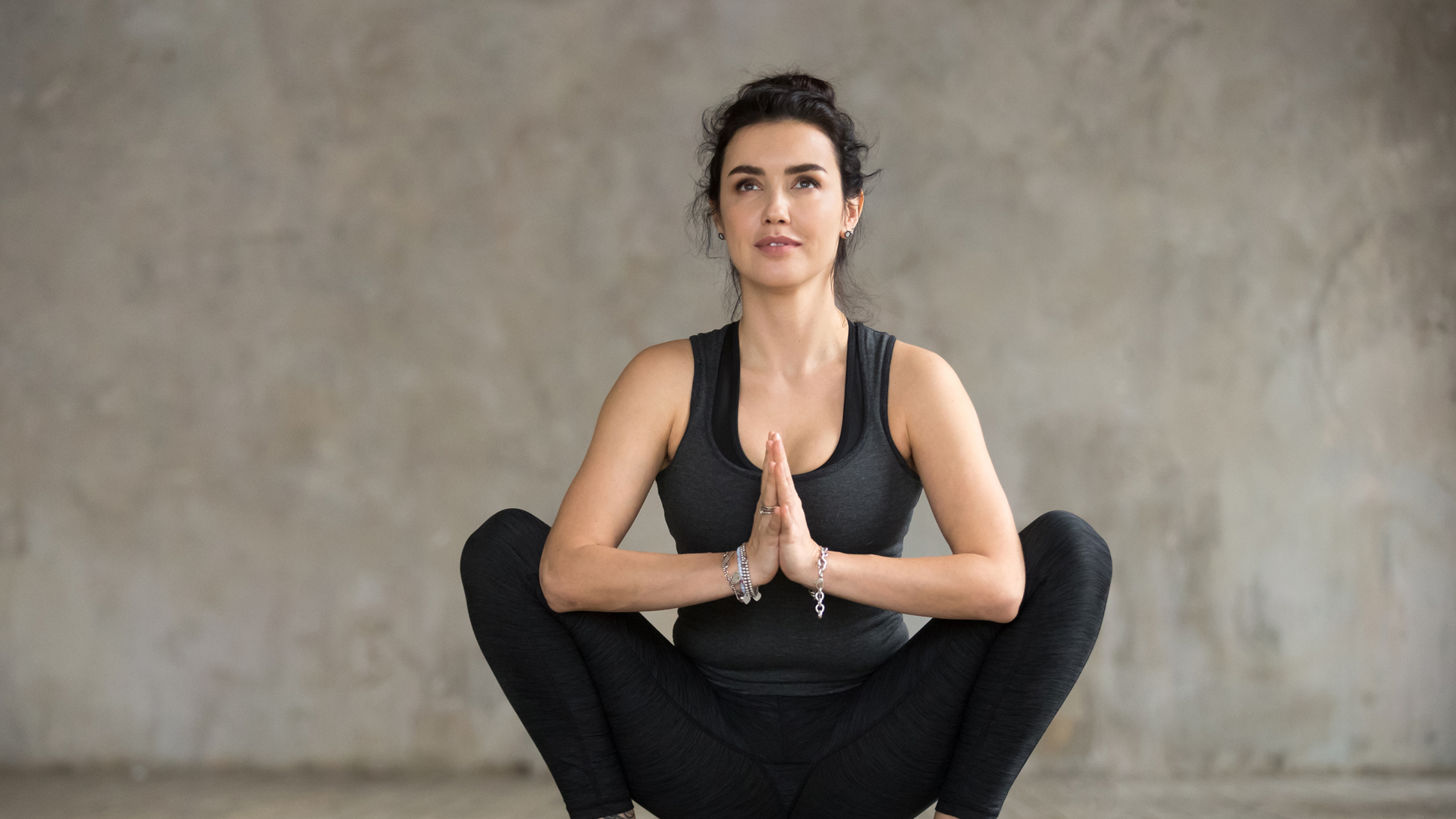
6. Forward Fold: Abdominal massage
How To:
- Sit with your legs extended forward and the soles of your feet pressed against a block or wall.
- As you inhale, extend your arms up above your head.
- As you exhale, hinge forwards at your hips and fold.
- Reach for your ankles, feet, or block, as this will add the intensity of a shoulder stretch.
- Hold for 5-10 breaths.
How it works
The forward fold action massages the digestive organs such as the liver, spleen, pancreas and intestines. This improves blood circulation and improves the functional capacity of these organs.

7. Knees to Chest: Wind relief
How To:
- Lay on your back, bend one knee and hug your knee into your chest.
- Press against the shin of your bent leg and press towards your chest.
- Breathe evenly and hold for 5-10 breaths, then swap legs.
- Add a gentle side-to-side rock.
- Release legs, straighten them, and relax.
How it works
As the name suggests, this gentle stimulating pressure releases tension from your stomach and massages the intestinal organs. This increases oxygen and blood flow to muscles and your digestive system.
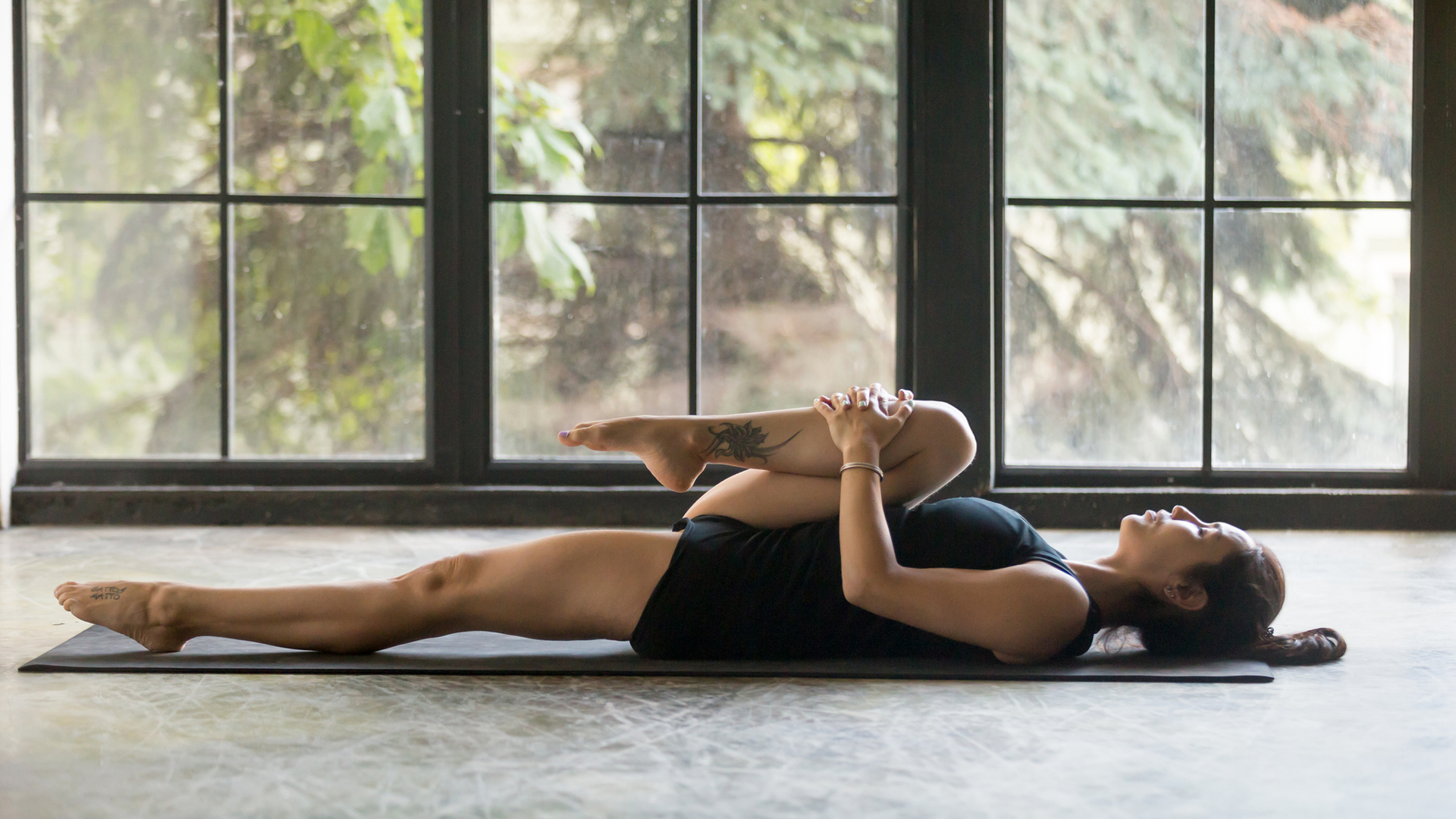
This article is not meant to offer medical advice and readers should consult their doctor or healthcare professional before adopting any diet or treatment.
Sign up for the Live Science daily newsletter now
Get the world’s most fascinating discoveries delivered straight to your inbox.

Sam Hopes is a level III fitness trainer, level II reiki practitioner, and resident fitness writer at Future PLC. Having trained to work with both the mind and body, Sam is a big advocate of using mindfulness techniques in sport and aims to bring mental wellbeing to the forefront of fitness. She’s also passionate about the fundamentals of training and how we can build more sustainable training methods. You’ll find her writing about the importance of habit-building, nutrition, sleep, recovery, and workouts.










